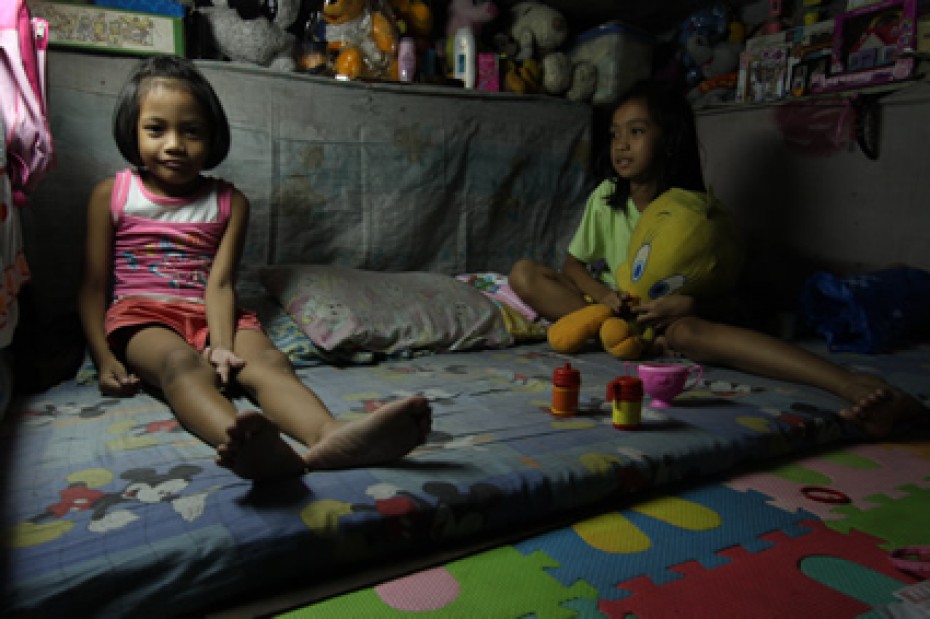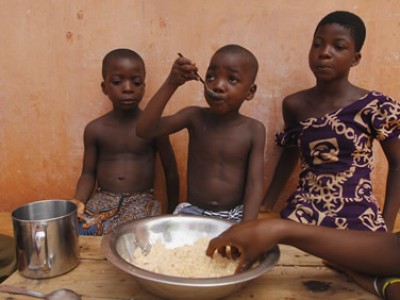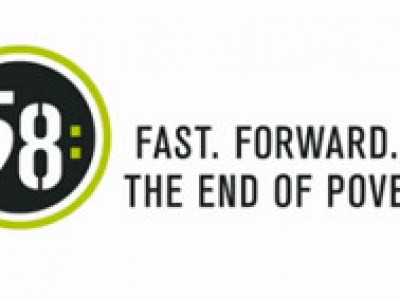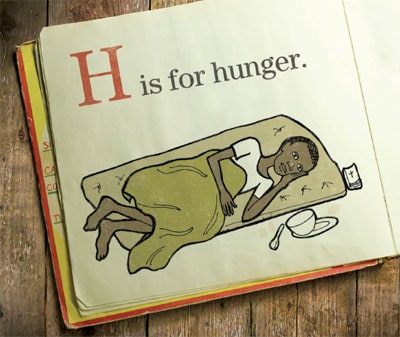How Would You Define Your Relationship with Food?

In A Place At The Table, author Chris Seay proposes that we spend 40 days in a fast with a unique twist: eat what our sponsored child eats. And in the process, recapture gratitude and a sense of solidarity with the poor.
Continue Reading ›Living in Manila: A Day in the Life of Jessa

Nine-year-old Jessa lives in a tiny hovel situated within a crowded squatter community in metro Manila. She wakes up at 4 a.m. and it is still dark at this time of day. But inside Jessa’s home, it is always dark.
Continue Reading ›
The Thing About Tummy Rubs
Today is World Food Day. A day to realize how blessed we are just for having a chance to eat a meal and get a full tummy.

Fast Living: How the Church Will End Extreme Poverty
Fasting isn’t an instrument to get God to hear our prayers or to help us master a primordial impulse or to accomplish anything. It’s something you do when circumstances are bad enough that you don’t want to eat and it would seem wrong to do so.

Sponsorship Means Fewer Grande, Three-pump, No Water Chai Tea Lattes
Three great tragedies – death, separation, poverty – all in one week. I was down for the count, lost and overwhelmed. The world was too filled with grief, and my contribution wasn’t going to make a dent in it.

Thankful for Summer
I can’t help but long for summer. I can’t wait for long drives with the windows down, cookouts with friends at a local park, and nice refreshing afternoons spent in a pool.
A Reality Cooking Show About the Reality of Living in Extreme Poverty
People are passionate about food. Celebrity chefs and the popularity of the Food Network and competition / reality cooking shows like Chopped, Iron Chef, Hell’s Kitchen and Masterchef demonstrate this. But for the 1.4 billion people in our world living on less than $1.25 a day, food and cooking isn’t entertainment. It’s survival.
But for the 1.4 billion people in our world living on less than $1.25 a day, simply feeding themselves is a daily challenge.
I Command You to be Openhanded Towards the Poor
Last month, Wess visited Australia and we grabbed him for a chat about why he is sold on child sponsorship as a way to help children, and what the Bible tells us about poverty.
There will always be poor people in the land. Therefore I command you to be openhanded toward your brothers and toward the poor and needy in your land. — Deuteronomy 15:11 (NIV)
Helping Haiti: Our Food Kit Distribution Process
We continue to procure and deliver relief supplies through our staging area in Florida and our two supply warehouses in Haiti. We estimate that 1,000 emergency relief food kits are arriving in Haiti daily, some of which are donated by church partners in the Dominican Republic.
Food kits are put together in the Dominican Republic and delivered to our Port-au-Prince warehouse via large trucks. In high-risk areas, we use security assistance from the U.S. Army, though at times this draws unwanted attention. As food and relief supplies become more readily available, there will be less of a need for this.
Smaller vehicles from our Haitian church partners come to our Port-au-Prince warehouse to pick up the food kits.
Each food kit gives a family of five one meal a day for two weeks.
Risks Remain Large for Kenyan Children
While the East African nation of Kenya does not grab as many headlines as its less stable neighbors to the west, disease, malnourishment and violence are leaving a mark on this generation of Kenyan children.
 About 500,000 Kenyan children are missing school due to lack of food.
About 500,000 Kenyan children are missing school due to lack of food.
According to the World Food Program, in countries where school attendance is low, the promise of at least one nutritious meal each day boosts enrollment and promotes regular attendance. Where that is not offered, hunger interferes with the children’s concentration in class, affecting class performance. As famine takes its toll across the country, a growing number of students are staying away from school altogether to help their parents look for food (The Standard, Sept. 23, 2009).
Drought and famine have led to an increase in the high school dropout rate primarily in schools in the Njoro and Nakuru areas. While 29 percent of children in Nairobi are malnourished, that number increases to 42 percent in the Eastern Province (Daily Nation, Oct. 7, 2009).
The United Nations Scientific and Cultural Organization (UNESCO) has stated that malnutrition is the major barrier to universal primary education in Kenya.
Famine conditions have also affected livestock in the rural areas of Kenya, undermining the primary source of income for pastoralists, especially the Maasai population. (more…)
H is for Hunger
Here’s a sad bedtime story: One out of seven people in the world go to bed hungry every night, victims of extreme poverty.
You can help them have a happier ending – compassion.com/youcan

You Give Them Something to Eat
It seems we, as humans, are always passing the buck, or bucking the responsibility.
Jesus replied, “They do not need to go away. You give them something to eat.”
“We have here only five loaves of bread and two fish,” they answered. — Matthew 14:16-17, NIV
Jesus saw the multitude and that the multitude was hungry. His attitude was not to leave their well-being up to someone else. He took responsibility and He wanted His disciples to assume this responsibility as well.
His disciples, however, could not see past their own limitations.
“We don’t have enough food for all these people” and “we don’t have the money to buy food for all these people” were the excuses Jesus heard.
The disciples wanted to send the hungry people away to fend for themselves, passing the responsibility of feeding the hungry back onto the hungry themselves.
Jesus, however, was not deterred by the physical limitations of the situation. He had bread the disciples didn’t understand. He understood the limitless nature of God’s provision, a provision not encased in the physical reality around us, but in the supernatural reality of God.
Is our response not much the same as the disciples when we are confronted with the need of the hungry? (more…)


